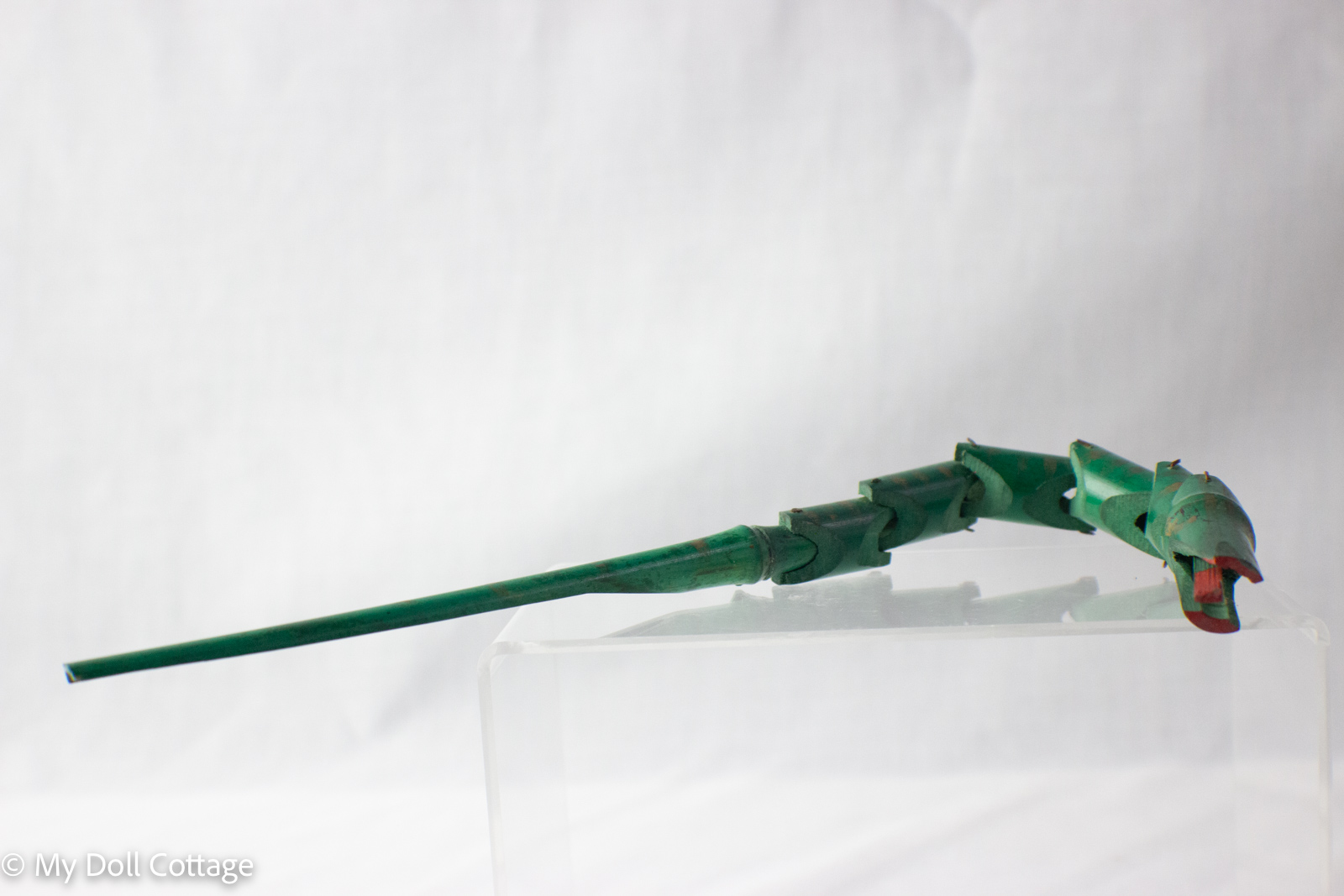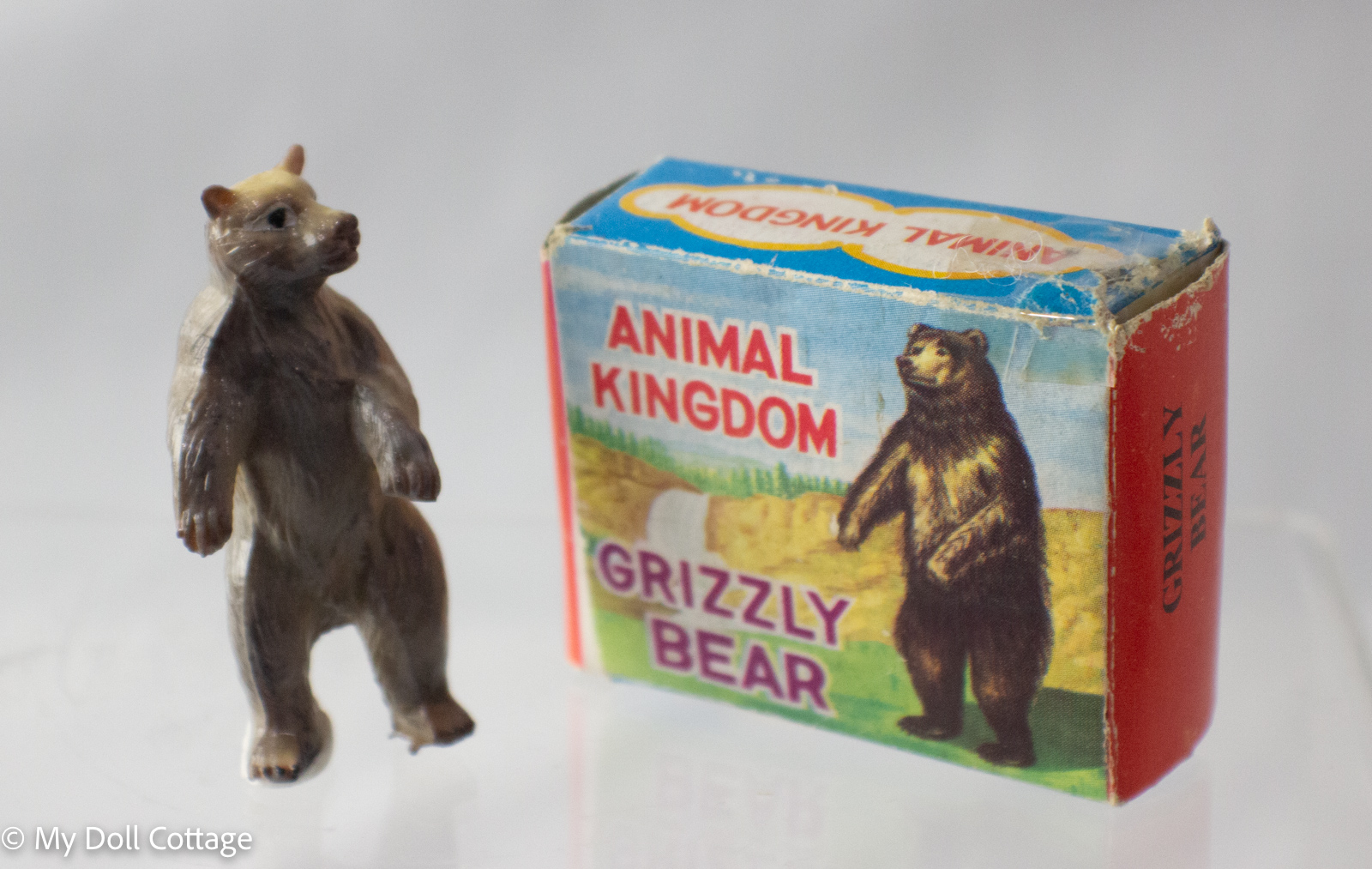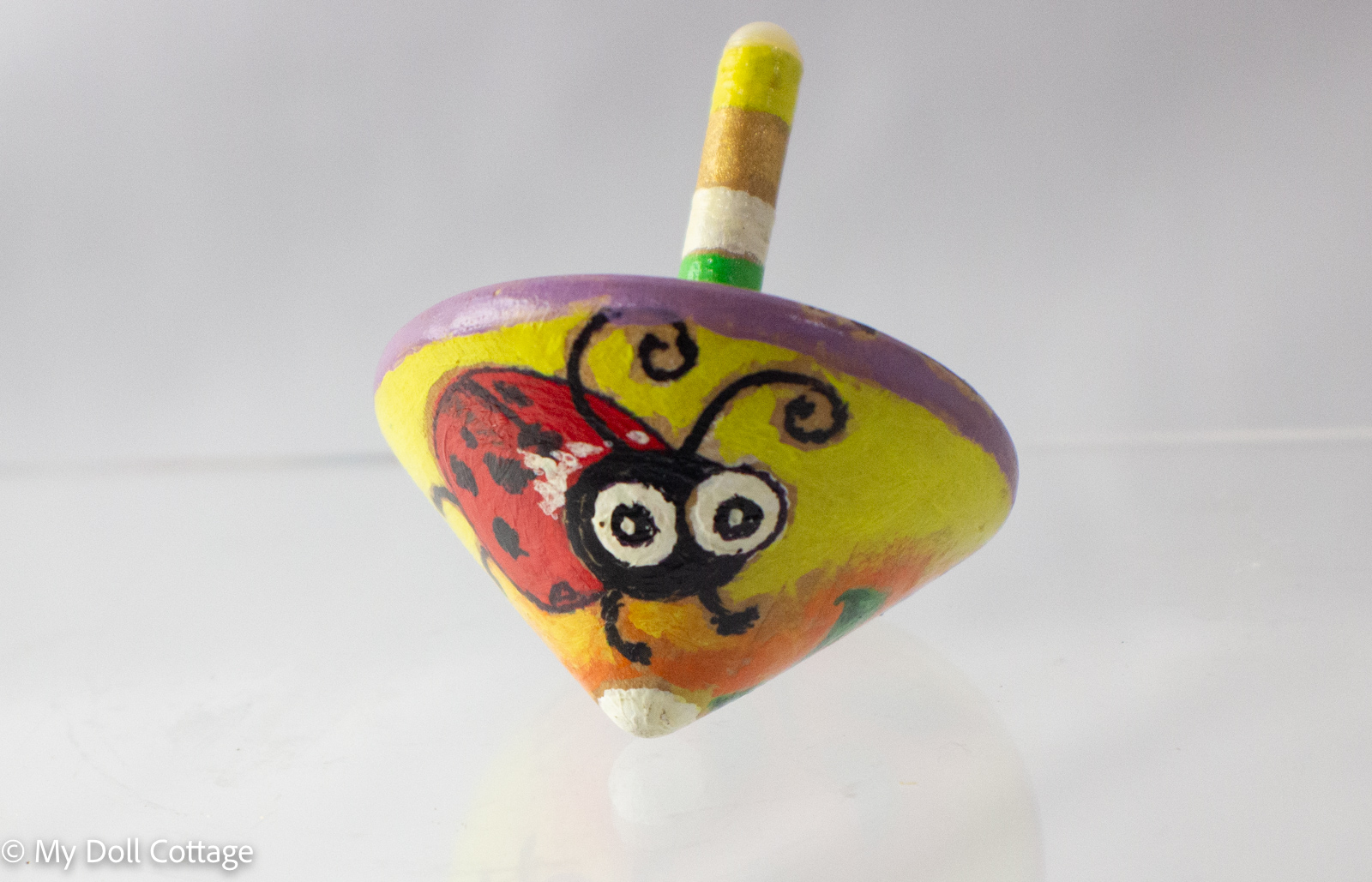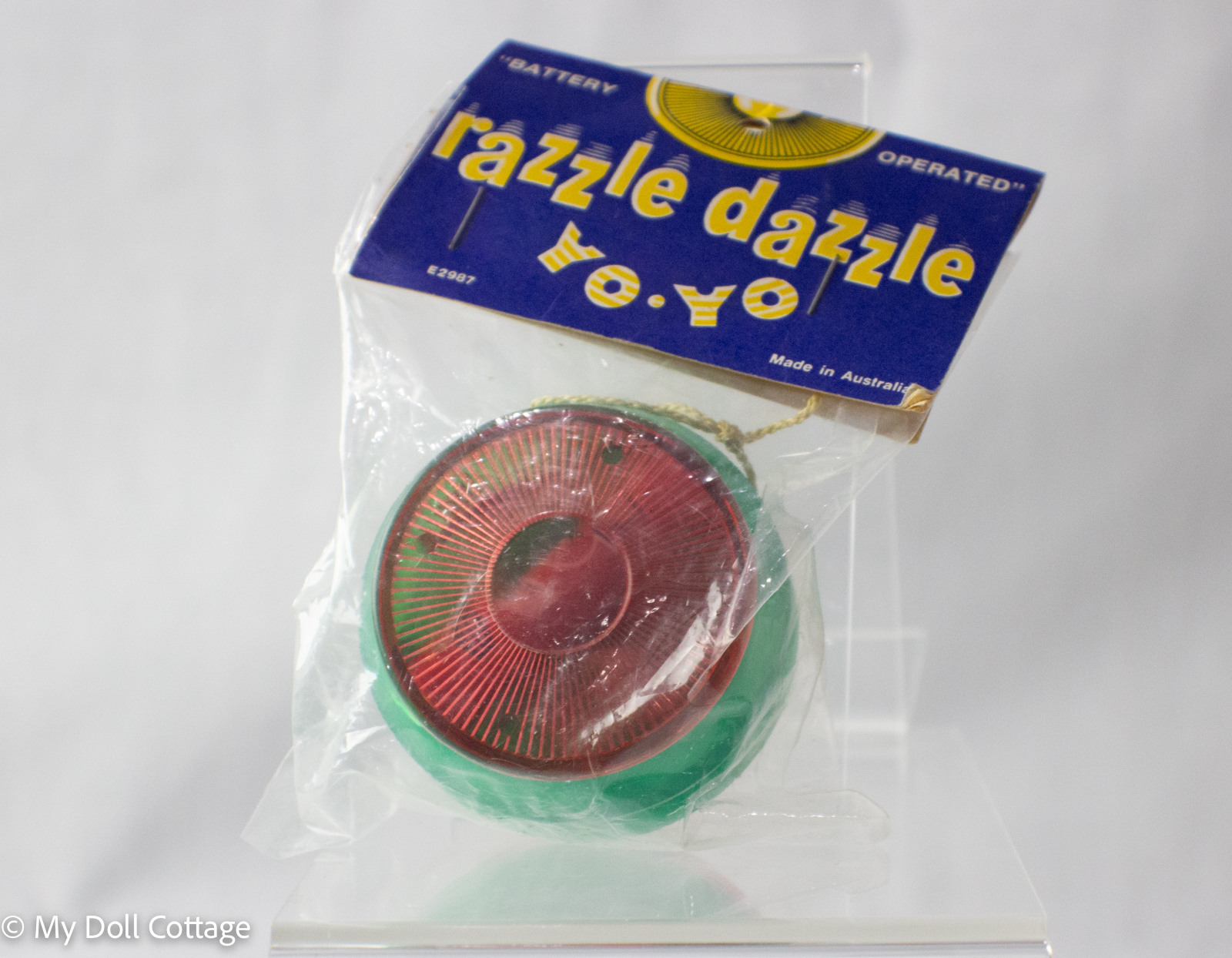Vintage Articulated Green Wooden Snake Toy – Made in Japan, 1950s

A hand-painted 1950s Japanese wooden snake toy featuring jointed body segments that slither side-to-side when held by the tail.
This charming vintage snake toy, crafted in Japan during the 1950s, is made from wood segments connected with small metal pins that allow it to move fluidly from side to side when lifted by the tail. Measuring approximately 380 mm long and 30 mm wide, it is hand-painted in green with red detailing on the mouth. Typical of mid-century Japanese wooden novelties, this toy demonstrates the playful yet simple design of the post-war export era. Signs of age and light surface wear indicate that it has been well loved and handled, adding character to its patina.
- Date: Estimated late 1950's
- Materials: wood
- Dimensions: 380 mm (length) × 30 mm (width) × 10 mm (height)
- Condition: Excellent; all segments intact, mechanism functional, minimal surface wear
- Markings: -
Date Note: Date is an estimate based on available research and stylistic features. If you have additional information, please contact us to help update our records.
Made from the following materials
Wood in Dolls and Toys
Wood has a long and rich history in the creation of dolls and toys, valued for its durability, natural beauty, and versatility. As one of the oldest materials used in toy making, wood has played a significant role in various cultures around the world, offering endless possibilities for creativity and craftsmanship.
What is Wood?
Wood is a natural material sourced from trees, known for its strength, warmth, and unique grain patterns. Its availability and ease of manipulation have made it a favored choice for artisans and toy makers for centuries. From softwoods like pine and cedar to hardwoods like oak and maple, different types of wood offer varying characteristics that influence the design and functionality of toys.
Applications in Doll and Toy Making
Wood has been used to create a wide range of dolls and toys throughout history. Early wooden dolls often featured simple shapes and painted faces, serving as cherished companions for children. These dolls were crafted with care, sometimes adorned with fabric clothing or accessories made from other materials. The tactile nature of wood allows for a comforting feel, making wooden dolls especially appealing to young children.
In addition to dolls, wooden toys have a rich tradition that includes building blocks, puzzles, and cars. Wooden blocks, in particular, are celebrated for their educational value, encouraging creativity and imaginative play as children construct their own worlds. The durability of wood ensures that these toys can withstand the rigors of play, often becoming family heirlooms passed down through generations.
Cultural Significance
Wooden toys and dolls hold cultural significance in many societies. For example, traditional wooden dolls from countries like Germany and Scandinavia often reflect local customs, attire, and folklore. These handcrafted pieces not only serve as toys but also as representations of cultural heritage and craftsmanship.
Artistic Expression and Collectibility
With the rise of artisan craftsmanship, wooden dolls and toys have gained popularity among collectors and enthusiasts. Artisans often showcase their skills by creating beautifully detailed and intricately designed wooden toys that appeal to both children and adults. The natural beauty of wood, combined with unique craftsmanship, adds to the collectibility and charm of these items.
Related Dolls and Toys from our collection






